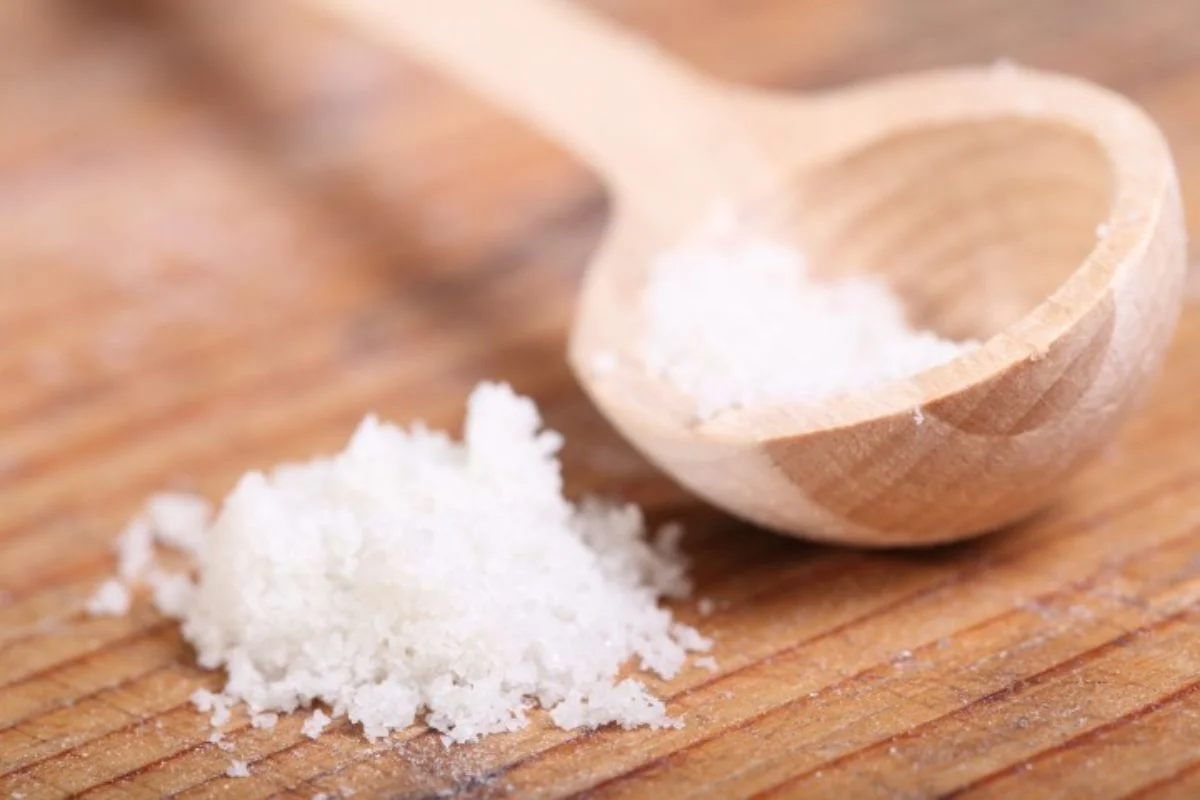
Why Forgetting Salt in Bread Dough is a Common Mistake (And How to Fix It)
Baking bread is a time-honored tradition that requires patience, skill, and attention to detail. But even I, as an experienced baker, can sometimes make a rookie mistake. I remember one particular incident when I forgot to add salt to my bread dough. It just slipped my mind amidst all the excitement of the baking process.
Salt, although seemingly insignificant, plays a crucial role in shaping the texture, flavor, and overall quality of the bread. Unfortunately, it’s a common mistake that many bakers, including myself, have made. The result? Bland and lackluster loaves that leave much to be desired.
Realizing my error, I knew I had to find a solution to salvage my bread. After all, there’s no point in dwelling on the mistake when there’s a way to rectify it. So, i armed with determination and a few helpful tips and tricks, I set out to ensure that my bread would still turn out perfectly seasoned and delicious.
In this article, I want to share my experience and shed light on why salt is such a crucial ingredient in bread-making. We’ll delve into the consequences of leaving it out and, most importantly, explore how to remedy the situation if you accidentally forget to add it.
Whether you’re a seasoned baker or a newbie , I encourage you to read on and learn from this common mistake so that you can avoid it in your own baking adventures.
Table of Contents
ToggleThe Role of Salt in Bread Dough
In this section we will explore the essential functions of salt in bread dough and why it is indispensable for achieving the perfect loaf.
Why is Salt Essential for Breadmaking?
Salt is often considered a humble ingredient, but it plays a pivotal role in the breadmaking process. Beyond merely enhancing flavor, salt influences the dough’s texture, rise, and overall structure. Its microscopic interactions with gluten and yeast are essential for creating an irresistibly light and airy loaf.
The Chemical Magic: Gluten Development
When flour and water combine, they form gluten – the protein network responsible for giving bread its structure and chewy texture. Salt assists in gluten development by strengthening the bonds between gluten molecules. This results in a more stable dough that can efficiently trap gas produced by yeast, leading to better rise and a fluffier crumb.
Regulating Yeast Activity
Yeast, a microscopic organism, is responsible for the fermentation process that gives bread its delightful rise and distinctive aroma. Salt plays a crucial role in regulating yeast activity. It controls yeast growth, preventing it from multiplying too rapidly, which can result in over-fermentation. Furthermore, salt helps improve yeast’s overall performance, allowing it to produce a more flavorful and aromatic bread.
Enhancing Flavor and Preservation
Salt is not only a flavor enhancer but also acts as a natural preservative. It brings out the nuances of other ingredients, elevating the taste profile of the bread. Additionally, salt inhibits microbial activity, extending the shelf life of the loaf and preventing it from becoming stale too quickly.

The Common Mistake: Why Salt is Forgotten
- Misjudging the Importance of Salt: Novice bakers often overlook the significance of salt in breadmaking, assuming it is purely for flavor. This misconception leads them to believe that omitting salt won’t have a substantial impact on the final product. However, as we have learned, salt has far-reaching effects on the dough’s texture, rise, and preservation.
- Recipe Misinterpretation: In the flurry of measuring ingredients and following complex instructions, it is easy to misinterpret or overlook the inclusion of salt in a bread recipe. Some recipes may not explicitly mention salt or may have it buried amidst other instructions, increasing the likelihood of accidentally omitting it.
- Substituting or Reducing Salt: Health-conscious individuals or those with dietary restrictions often opt to reduce or substitute salt in their recipes. While this may be a valid choice for some dishes, breadmaking requires a delicate balance of ingredients, and altering the salt content can have adverse effects on the final product.
- Distractions in the Kitchen: Breadmaking can be an involved process, requiring focused attention at various stages. In the midst of kneading, proofing, or attending to other ingredients, it’s easy to forget a small but crucial ingredient like salt. Distractions in the kitchen can lead to unintentional omissions, resulting in a lackluster loaf.
- Lack of Experience or Knowledge: Beginners or those with limited experience in breadmaking may be unaware of the significance of salt. Without proper education or guidance, they are more likely to overlook this critical ingredient, missing out on the opportunity to elevate their bread to new heights.
- Prepackaged Dough Mixes: Convenience-driven bakers often rely on prepackaged dough mixes, which can sometimes contain pre-measured ingredients, including salt. However, if one mistakenly assumes the mix is complete and fails to check for the addition of salt, they risk ending up with a lackluster loaf.
How to Fix the Mistake: Adding Salt to the Bread Dough
- 1. Realizing the Oversight: The first step in rectifying the mistake is realizing that salt was omitted from the dough. If you notice that your bread lacks flavor, has a dense texture, or did not rise adequately, chances are you forgot to add salt.
- 2. Assessing the Dough: Before adding salt, it is essential to assess the dough’s stage of development. If you have just begun kneading or are in the early stages of proofing, it is relatively easy to incorporate salt into the dough. However, if the dough is well into the rising process or has already been shaped, incorporating salt may be more challenging.
- 3. Dissolving Salt in Liquid: To ensure even distribution of salt throughout the dough, dissolve it in a small amount of liquid from the recipe. This could be water or any other liquid called for in the recipe. Dissolving the salt beforehand prevents uneven distribution and ensures proper integration during the mixing process.
- 4. Mixing and Kneading: Once the salt has dissolved, incorporate it into the dough by pouring the liquid mixture evenly over the dough. Proceed to mix and knead the dough thoroughly, allowing the salt to disperse evenly. Take care not to over-knead the dough, as this can result in a tough texture.
- 5. Extending Rising Time: Adding salt to dough that has already undergone significant rising can slow down yeast activity. In such cases, it may be necessary to extend the rising time to compensate for the delay caused by the addition of salt. Patience is key in achieving a well-risen and flavorful loaf.
- 6. Adjusting Flavor and Salt Content: If you’re concerned about over-salting the dough, consider adjusting the salt content in subsequent bread batches. Gradually reduce or increase the amount of salt used until you find the perfect balance that suits your taste preferences.
Tips to Avoid Forgetting Salt in Bread Dough
Preventing the mistake of forgetting salt in bread dough is relatively simple. Here are some tips to help you avoid this common error.
- Make a checklist: Before you begin mixing your dough, make a list of all the ingredients you need and check them off as you go. This will help ensure that you don’t forget anything.
- Measure accurately: Use measuring cups and spoons to ensure that you are adding the correct amount of salt to your dough.
- Follow the recipe: Stick to the recipe and don’t make substitutions unless you are confident that you can adjust the salt accordingly.
- Use a timer: Set a timer for each step of the baking process, including mixing, rising, and baking. This will help you stay on track and avoid distractions.
- Add salt first: When mixing your dough, add the salt first, before any other ingredients. This will help ensure that it is evenly distributed throughout the dough.
Frequently Asked Questions (FAQS)
Is it okay to omit salt from bread dough for dietary reasons?
What can I do if I accidentally added too much salt to the bread dough?
Can I add salt directly to the dough without dissolving it in liquid?
How can I prevent forgetting salt in bread dough in the future?
Does the type of salt used in bread dough matter?
What to Do With Unsalted Bread Dough
If you have unsalted bread dough, there are several ways to use it. Here are some ideas:
- Turn it into croutons: Cut the bread into small cubes, toss with olive oil and herbs, and bake in the oven until crispy.
- Use it for bread pudding: Cut the bread into cubes, soak in a mixture of milk, eggs, and sugar, and bake in the oven for a delicious dessert.
- Make breadcrumbs: Blend the bread in a food processor until it becomes fine crumbs, then use it to coat chicken or fish.
Why Forgetting Salt in Bread Dough is a Common Mistake | Conclusion
As we’ve explored in this article, forgetting salt in bread dough is a common yet avoidable mistake that can significantly impact the quality of your homemade bread. Salt’s influence extends beyond mere flavor enhancement; it affects gluten development, yeast regulation, and preservation.
By understanding the role of salt in breadmaking and employing the suggested solutions to fix this oversight, you can elevate your bread to new heights of flavor and texture. So next time you embark on a baking adventure, remember the humble salt and savor the difference it makes in your loaves.
Lindsey Mackenzie
About me
Hi there! I’m Lindsey Mackenzie, the founder of Bake Smartly. Baking has been my passion since childhood, growing up in my father’s bakery. With Bake Smartly, I’m excited to share my love for all things sweet and savory. Join me on this delicious journey as we whip up scrumptious treats and sprinkle joy into every bite!






